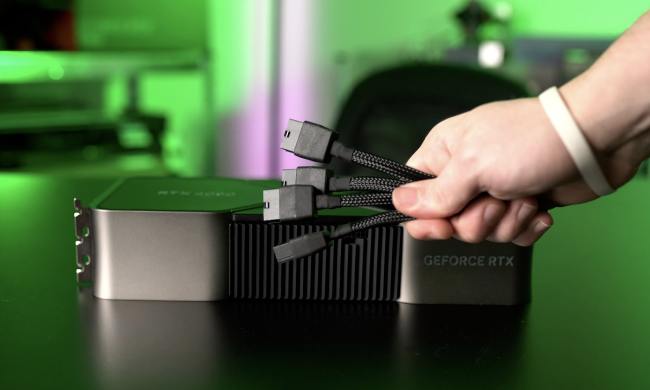Today marks the 35th anniversary of the launch of NeXTSTEP, a computer operating system launched by Steve Jobs during his years away from Apple. Deeply obscure these days and long since discontinued, it’s nevertheless had a monumental impact on computing history and development — and has led to many of the things we take for granted every day.
The World Wide Web? It was dreamed up on NeXTSTEP. It paved the way for macOS and all of Apple’s other modern operating systems. And as we mentioned earlier, it was crafted at a company led by a certain Steve Jobs. You might have heard of him.
Put together, it’s hard to overstate the legacy of NeXTSTEP and its innovations, both large and small. It could be the most influential operating system you’ve never heard of.
Full of great ideas

The initial release of NeXTSTEP took place on September 18, 1989. NeXT Computer, the company that developed NeXTSTEP, was founded by Steve Jobs in 1985 after he was forced out of Apple. If Jobs couldn’t work on Apple computers anymore, he’d make his own, including the operating system they ran on.
NeXT made high-end workstation computers, a far cry from the consumer-oriented Macs that are Apple’s modern bread and butter. To run its devices, NeXT needed a powerful operating system, and NeXTSTEP filled that void.
It came with a wide range of tools and concepts that are still in use today, both for demanding pros and consumer users. Just a quick overview of NeXTSTEP’s features will show you how many of its innovations have stood the test of time. Here are a few things it was responsible for:
- The macOS Dock
- Large full-color icons
- Drag-and-drop functionality across the operating system
- Scrolling and window dragging
- Properties dialog boxes
- Keyboard shortcuts that are still in use today (such as Command-B and Command-I for bold and italic, respectively, or Command-W to close a window)
NeXTSTEP didn’t invent graphical user interfaces, but thanks to its implementation of them, they became much more popular across the computing sphere. Without it, today’s world would look very different indeed.
The innovation superhighway

NeXTSTEP played host to the Electronic AppWrapper, the forerunner of the modern app store concept. This was a catalog of apps, music, fonts, clip art and more, and it handled the distribution, encryption and licensing of the software it contained. It was a big step up from traditional app distribution methods — typically using floppy disks or CD-ROMs — and although it was developed by a third-party group rather than by NeXT, the Electronic AppWrapper found its home on NeXTSTEP. Like many aspects of NeXTSTEP, it was well ahead of its time.
The app store was far from the only important tool created using NeXTSTEP. The operating system birthed a whole host of innovative apps, games and tools, many of which went on to change the world.
It was NeXTSTEP’s power that made it an excellent resource for programmers and app developers. It’s therefore unsurprising that it found its way to CERN, the nuclear research organization, and to Tim Berners-Lee, then a computer scientist at CERN.

You might recognize Berners-Lee’s name — he is widely heralded as the inventor of the World Wide Web, the URL web address system, the HTML markup language, and the HTTP protocol. And it was the first of these, the World Wide Web, that Berners-Lee created using NeXTSTEP.
After a proposal for a hypertext system was presented to CERN management, a NeXTcube computer was bought for prototyping. As Berners-Lee’s collaborator Robert Cailliau put it: “Tim’s prototype implementation on NeXTSTEP is made in the space of a few months, thanks to the qualities of the NeXTSTEP software development system.” It was the perfect partner for a project with the scope and scale of the World Wide Web.
Berners-Lee also used NeXTSTEP to develop the world’s first web browser, which he named WorldWideWeb (not to be confused with the aforementioned World Wide Web, the information-sharing system that interacts with the internet). The browser only lasted four years before it was discontinued, but it introduced the world to WYSIWYG (“what you see is what you get”) HTML editing, among other innovations.
And it wasn’t just Berners-Lee who was hard at work inventing things using NeXTSTEP. The popular games Doom and Quake were created on the system, as was the forerunner of the Macromedia FreeHand vector illustration app. Such was the power of NeXTSTEP that it became a popular option for developers and coders in the nascent software world.
An epic legacy

Yet for all its lasting effects, NeXTSTEP never became a massive commercial success. NeXT was never very profitable, and it only ever sold around 50,000 NeXT computers — a tiny drop in the ocean compared to its rivals.
But despite the small sales numbers, NeXTSTEP had an outsized influence on computing. It was held up as a trendsetter for its many innovations, with other companies quickly moving to copy its ideas in their own systems.
An ailing Apple — deep in crisis and almost bankrupt — formally bought NeXT in 1997 for $429 million, bringing Steve Jobs back on board in the process. It was a move that famously revived Apple’s fortunes and paved the way for it to become a global rockstar of a company, yet this ground-shaking development has often overshadowed the fact that Apple absorbed NeXTSTEP too. The operating system was quickly merged with Apple’s existing software and eventually led to the first launch of Mac OS X, ending active development of NeXT’s operating system.
But its legacy lives on to this day, both in terms of software features that are still in use and the things that it was used to create. Though it remains relatively unknown, there are few operating systems that have impacted the world of computing in quite the same way.




